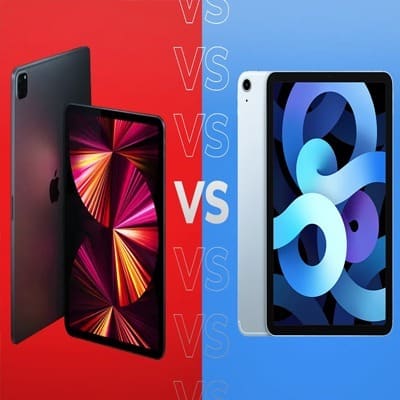
The problem for anybody developing a computer device – whether it’s a desktop, laptop, tablet, iPad, or smartphone – is to produce a machine that is correctly balanced to satisfy the demands of its users at the price that is being paid. This is not a precise science. It is determined by the cost of main components such as the CPU and memory. Also the screen, graphics, storage modules, operating system, and so on. You trust them, however, not to burden low-end devices with the cost of high-end CPUs, or to jeopardize high-end devices by offering insufficient memory and/or storage space.
For starters, people demand more capacity to handle both apps and digital content. It is now inexpensive or free and easy to download thanks to higher broadband speeds. We no longer listen to 64kbps MP3 files or watch movies with a resolution of 640 x 480 pixels, and file sizes have exploded. Web pages are, too.
Second, even as their size has expanded, the cost of Flash memory chips has been steadily falling. When I found out that storage cards were only £1 a megabyte, I was overjoyed. I can now purchase 128GB cards for less than £20, equating to 64 gigabytes for every cent spent.
64GB is only suited for smartphones, Chromebooks, and Windows netbook-style PCs in this situation. Shipping a high-end £769 tablet with just 64GB, such as the iPad Pro, is ridiculous. It should contain 128GB of storage, which would be a reasonable match for companion versions with 256GB (£919), 512GB (£1,119), and 1TB (£1,319). Then, with each level above, the storage would be doubled.
There’s another way of looking at it. If you purchase a 64GB iPad Pro 11, you will spend £12 per gigabyte of storage. If you buy the 256GB version, the price per gigabyte lowers to £3.59, and at 1TB, it’s just £1.29. Putting 128GB in the entry-level model – £6 per gigabyte – wouldn’t make it a steal. But it would put it in line with the rest of the lineup. And the extra cost of installing 128GB would be negligible at retail rates, even without taking into account the tremendous savings. Apple must receive for purchasing them by the millions.
In summary, I don’t believe you or anybody else should get a 64GB iPad Pro. Either go overboard and acquire an iPad Pro 11 with 256GB of storage capacity or get an iPad Air with the same amount.
Alternatively, wait for Apple to produce new iPad Pro models starting at 128GB. This might happen in November (the current models were launched in November of last year), March 2020, or later. Your Tab S2 is not yet dead…
Storage cases
You’re an experienced tablet user with 160GB of storage, so you should know how much space you’ll need. With each new device, I try to double everything since you’ll always need more of everything in the future. Less-than-doubling rarely seems like a meaningful development.
However, with storage capacity, you have considerable leeway. Many devices feature SD card ports which is a cheap and easy approach to solve difficulties with computers that lack sufficient built-in storage. Although Apple’s hardware designers would never touch a MicroSD slot. The firm does provide a Lightning to SD Card Camera Reader cable (£29), and there are alternative solutions.
The Apple-approved strategy is to save as much as possible in iCloud rather than on the device and to stream material like music and movies rather than playing it locally. Streaming frequently relies on viable broadband or mobile connection, which might cause buffering.
Another option is to utilize add-on storage. Standard USB drives will not fit into iPads, but numerous businesses provide drives that will fit into Apple Lightning or USB Type-C connections. You may also get external hard drives with wireless connectivity. iPad applications to save data without requiring a physical connection. One example is WD’s MyCloud (from £120), while Macworld provides other alternatives.
When it comes to cloud storage and streaming, keep in mind that you may utilize any cloud – Dropbox, Microsoft’s OneDrive, Google One, and so on – rather than only iCloud. You may also wirelessly stream music and movies from a local PC or NAS server if one is accessible.
iPad Air Vs iPad Pro
The iPad Pro 11 (2018) offers major advantages over the 10.5in iPad Air (2019), which is virtually the same as the 10.5in iPad Pro (2017) but faster. These include a slightly larger, brighter (600 versus 500 nits) screen that supports Apple’s 120Hz ProMotion refresh rate. It also has an eight-core A12X Bionic CPU, as compared to the iPhone XR and XS’s smaller six-core A12 version. Both include built-in M12 motion coprocessors, as well as the eight-core “Neural Engine” that the A10 Fusion chip in the entry-level iPad doesn’t have.
Because of the A12X’s higher power, the screen refresh rate may be boosted from 60Hz to 120Hz. It should make a difference while playing games or using the Pencil, but it’s not a dealbreaker for most users. Because the two circuits are so similar, analysts expect future iPad Pro models to use updated A13 processors, similar to those seen in the next iPhone 11.
The iPad Pro 11 features a somewhat superior camera and uses Face ID for authentication. Whereas the iPad Air uses Touch ID. Finally, the Pro supports a second-generation pen, but the Air only supports the original Apple Pencil, which is available for an additional fee. Otherwise, there is no discernible difference in screen sharpness (both are 264ppi), size, weight, or battery life on Apple’s comparison.
